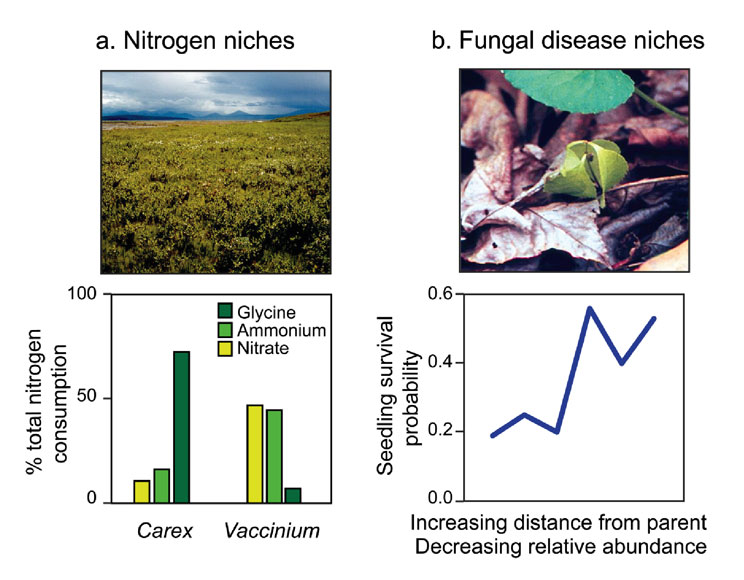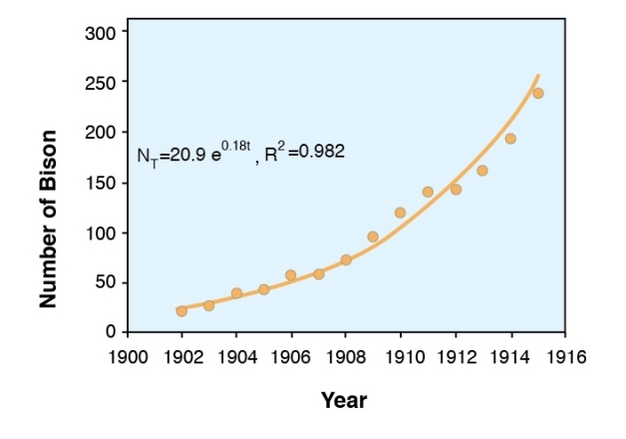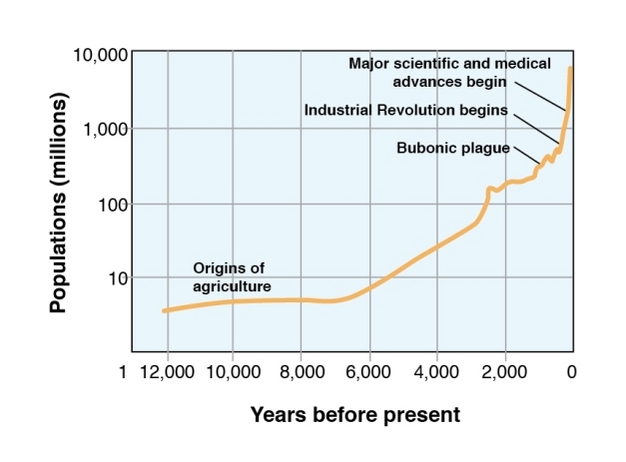Suggest why these data are accurate but the method used to obtain these data is not a valid way of estimating the number of elk in the population. Insect populations have declined by 75 in.

The Maintenance Of Species Diversity Learn Science At Scitable
Carnivores use pursuit of prey or ambush to capture prey.

. Seasonal and yearly changes in the environment natural disasters such as forest fires and volcanic eruptions and competition for resources between and within species. National Science Education Life Science Standards. Commensalism 0 in which one species benefits from the interaction while the other species neither benefits nor suffers.
Invasive Species and Population Growth. Animal populations in freshwater ecosystems have plummeted by 75 since 1970. As human populations and activities in and around Oregon nearshore waters increase so too do the impacts on fish wildlife and the habitats they utilize.
爀䜀爀愀搀攀猀 㔀ⴀ㠀㨀屲The number of organisms an ecosystem can support depends on t൨e resources available and abiotic factors such as quantity of light and water range of temperatures and soil composition. Some predators use camouflage and others use chemical warfare venom to capture prey or deter predators. What term is used to describe the steady population that the environment can sustain in.
Populations consist all of the species living within a specific area and populations fluctuate based on a number of factors. By 1926 grey wolves had been hunted to extinction in Yellowstone Park. Population ecologists have described a continuum of life-history strategies with K-selected species on one end and r-selected species on the other.
Prey species escape predators in a number of diffe rent ways such as swift movement protective. Among biological organisms there is a continuum in life history strategies between what are referred to as r-selected species and k-selected speciesLife history strategy is correlated with many aspects of an organisms reproductive strategy and life history as well as with demographic variables such as generation time and life span and population parameters. K-selected species are adapted to stable predictable environments.
Such labels are used to describe where on the endangered scale these species lie. Populations are dynamic entities. The number of individuals in a population comes down to one of four things.
The letter K represents the carrying capacity of a habitat for members of a given sort of organism. These species tend to have larger but fewer offspring and contribute large amounts. The grey wolf Canis lupus is a large predator whose diet includes elk.
However this species could still be. Exploitation in which one species benefits at the expense of the other. A population model for two species can describe either competition for resources an increase in one species decreases the growth rate in the other or cooperation for resources an increase in one species increases the growth rate in the other.
An AZE site should only be designated if it is the sole area where and Endangered or Critically Endangered species occurs contains the overwhelmingly significant. K and r Reproductive Strategies. The factors affecting species and their habitats are often intertwined and anthropogenic impacts may be exacerbated by naturally occurring processes.
Interspecific competition in which both species incur a. The proximate goal of these programs is to prevent imminent extinction of declining species or populations. Overall 40 percent of the worlds 11000 bird species are in decline.
Populations increase environmental resistance causes the growth rate to slow down until a. This is the called the Exponential Population Growth Equation and gives us a J shaped curve. Herbivores feed on immobile plant species.
Under the experimental growth conditions which were outlined above a small population size and unlimited resources rmax is the intrinsic rate of population increase and dNdt rmaxN. Both predators and prey can use a variety of strategies in order to survive including speed flight physical protection camouflage chemical compounds mimicry and countless other strategies. List some of the strategies used by Type I survivors that ensure they have the highest post-.
The species labeled as threatened are at the bottom of this scale and are not yet at the stage of being vulnerable which is equivalent to be facing a high risk of extinction in the wild. K-selected species high parental care or protection few large offspring slower growth long life high investment in individual offspring late maturity high trophic level adapted to stable environment predators regulated mainly by intrinsic factors niche. Such species make up one of the two generalized life-history strategies posited by American ecologist Robert MacArthur and American biologist Edward O.
For the systems below identify the parameters as growth rates carrying capacities and measure of interactions. Explain the advantages of specific reproductive strategies that increase biological fitness parental investment male-male aggression courtship rituals mate guarding copulatory plugs etc Differentiate between animal mating systems and predict relationships between these mating systems and sexual dimorphism or sperm competition. K-selected speciesthat is species whose population sizes fluctuate at or near their carrying capacity Kmake up the second strategy.
Marine animal populations have also fallen by 40 overall. Re-stocking is considered as a conservation strategy where populations have dropped below critical levels and species recovery is questionable due to. Populations of K-selected species tend to exist close to their carrying capacity.
In the equations describing growth of populations of organisms r represents the slope of the line representing exponential growth. Captive breeding programs broadly speaking serve to use hatcheries to maintain populations that are unable to survive in the wild for at least a portion of their lifecycle Utter and Epifanio 2002. If you were going to maximize the number of individuals in a population you would need to increase birth rate and immigration and decrease death rate and emigration.
-Mutualism can help populations of species grow because the organisms help making life easier for each other instead of competing for the same recourses. Re-stocking is the translocation of an organism into the wild into an area where it is already present.

An Introduction To Population Growth Learn Science At Scitable

An Introduction To Population Growth Learn Science At Scitable

10 Easy Things You Can Do To Save Endangered Species Endangered Species Coalition
0 Comments